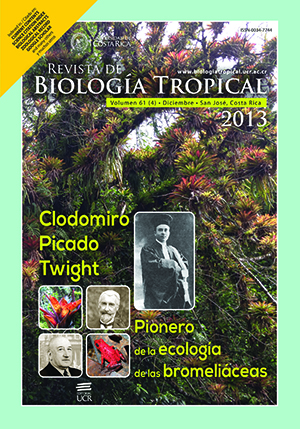Abstract
The neotropical liana Gnetum leyboldii (Gnetaceae) is a gymnosperm that resembles angiosperms in wood anatomy, overall morphology, and seed dispersal mechanism. Like other woody lianas, seedlings germinate in the shaded forest understory and start climbing towards the canopy, being exposed to sites with extreme differences in light conditions. However, the extent of physiological and structural adjustment to contrasting light conditions in the early regeneration stages of Gnetum is unknown. To answer this question, we analyzed seedling growth and photosynthetic responses using a common garden experiment with two light regimes: full sun and low light (20% of full sun) at La Selva Biological Station, Costa Rica. We also characterized the germination pattern of this species. We monitored one and half-month old seedlings for four months. Leaf structure finely adapted to light treatments, but gas exchange properties were buffered by large seed reserves, which dominated biomass distribution (about 50% of the total biomass), followed by stem (27%), leaf (16%) and root biomass (6%) across light conditions. The presence of large seeds and the low photosynthetic rates of seedlings in both environments show that G. leyboldii is specialized to exploit deep shade. More research is needed to determine if the patterns found in G. leyboldii are typical of similar lianas that initially exploit deep-shaded understories in their ascension to the canopy.##plugins.facebook.comentarios##
Downloads
Download data is not yet available.






